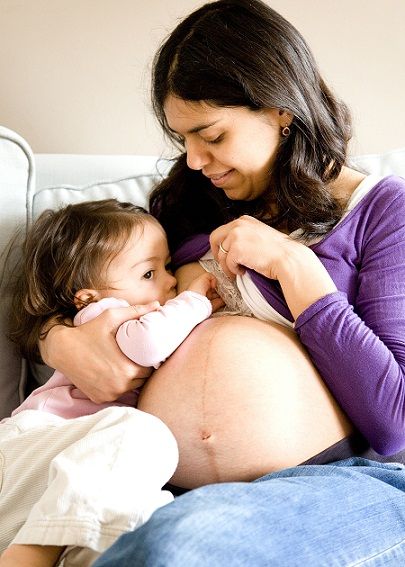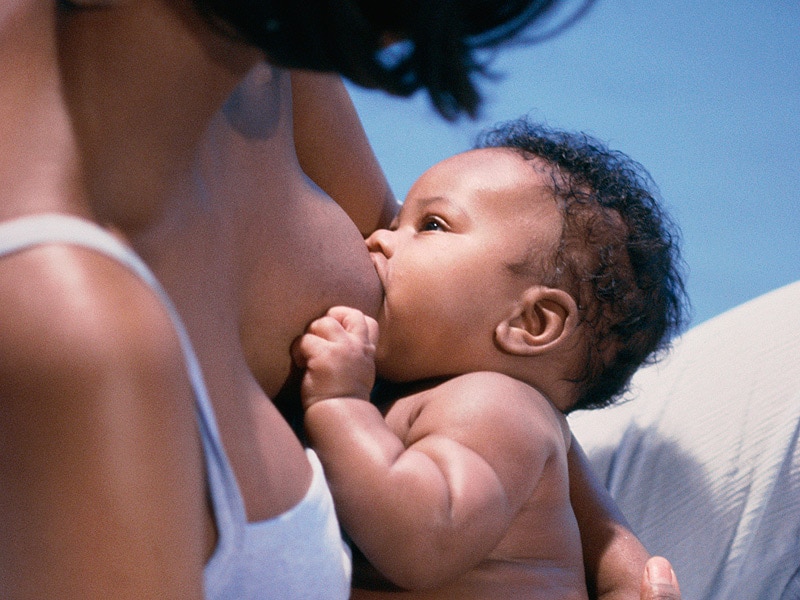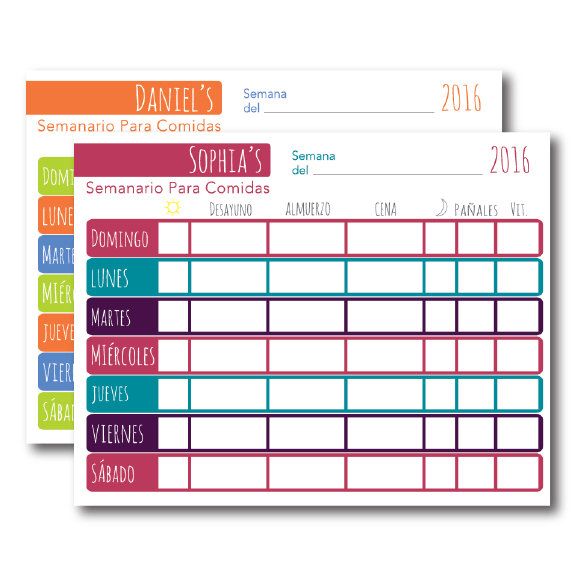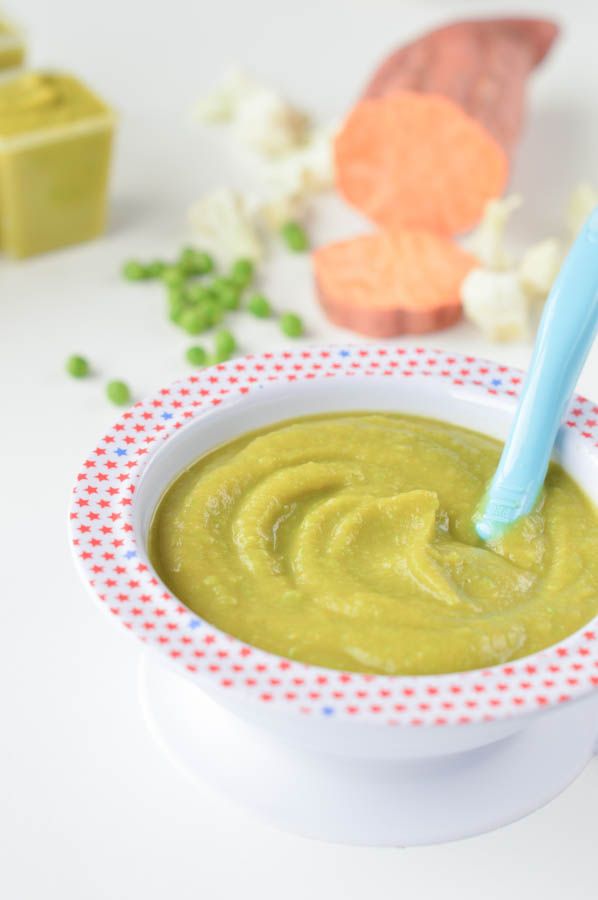Baby holding ear while feeding
Causes and When You Should Worry
Your baby seems to be growing and developing at lightning speed. They’re learning and doing new things every day, including some things that you’d rather they didn’t do. But if your baby is suddenly pulling, tugging, or scratching at their ears, don’t worry.
There are several reasons why your little one has a sudden fascination with their ears. In fact, if your baby is touching their ears but doesn’t have any other signs or symptoms, it’s most likely harmless.
Here’s how to figure out when it might be something more.
Your baby has just discovered they have ears
Your baby may have just noticed that they have ears attached to their head! This is kind of like that time your baby realized that they could make their hands move and kept wiggling their fingers in front of their face — or accidentally smacking themselves.
Since their ears are something new and their pincer grip is getting stronger, your baby might touch, pull, or play with their ears This can become a temporary habit. They’ll stop touching their ears as soon as something else captures their attention — perhaps their toes!
Your baby is self-soothing
You might be used to your little one calming themselves by sucking on a pacifier or their hand or thumb. But babies may self-soothe in other ways, too. Your baby might be pulling, rubbing, or touching their ears because it feels good and helps them relax.
If your baby is playing with their ears to self-soothe, you’ll probably notice that they do it more right before they fall asleep or between feedings. As your baby grows, they won’t need to self-soothe in this way and will stop on their own.
Your baby has itchy skin
Your baby might just be scratching an itch when they’re pulling or rubbing at their ears. Babies can get dry skin for many reasons, just like adults. Some causes of dry, itchy skin are mild and go away on their own.
The delicate skin around your baby’s ears and head can also get dry. Your baby might sometimes have slightly dry or itchy skin due to the following:
- heating
- dry air
- air-conditioning
- temperature changes
- too much washing or bathing
- some soaps or cleansers
- laundry detergent
- some types of clothing fabric
- too much sweating
Let your doctor know if your baby has a serious rash or keeps getting dry, flaky skin or any kind of a rash.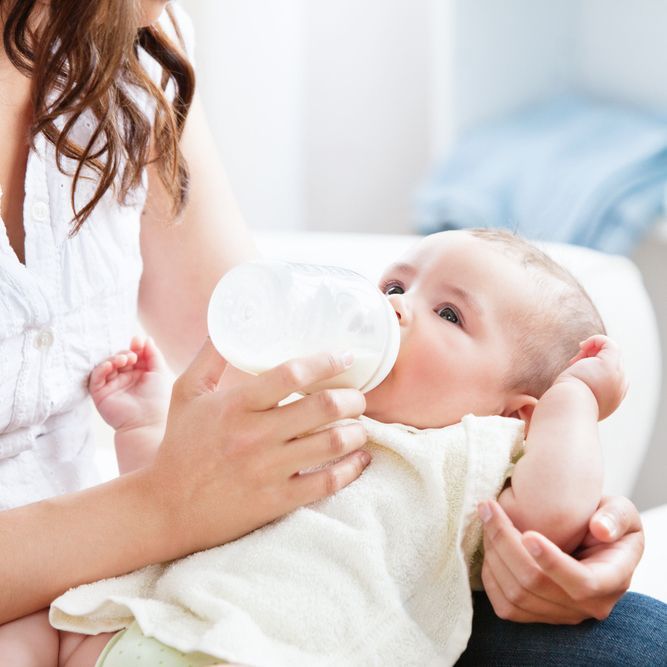 Eczema is common in babies. Almost 65 percent percent of babies and children with atopic dermatitis, the most common type of eczema, show symptoms of this skin condition before they’re 1 year old.
Eczema is common in babies. Almost 65 percent percent of babies and children with atopic dermatitis, the most common type of eczema, show symptoms of this skin condition before they’re 1 year old.
Eczema symptoms in babies include:
- dry, scaly skin patches
- redness
- skin swelling
- tiny skin bumps
- thick or hard skin patches
- crusting or pus on the skin
- sensitive skin
- irritability and crying
- difficulty sleeping or feeding
Your baby has an ear infection
Your baby might be pulling or touching their ears because they have pain from an ear infection. Ear infections are most common in babies and toddlers between 3 months and 3 years old. And the poor little buggers can get them more than once.
Babies and small children get more ear infections because of where their ear tubes are. They have more horizontal ear tubes, while older children and adults have vertical ear tubes. Fluid doesn’t drain out of a baby’s horizontal ear tubes as well as it does from vertical tubes.
If your usually happy baby is touching or scratching at their ears, look for other signs and symptoms of an earache, including:
- crying
- irritability
- not wanting to feed
- difficulty falling asleep or staying asleep
- fever
- vomiting
- runny nose
- allergy symptoms
- other cold or flu symptoms
- just got over a cold or flu
Your baby is teething or has general pain
Teething pain can look a lot like an ear infection in a baby. This is because the nerves around the teeth and mouth go all the way to the ears. One difference is that an ear infection usually happens during or right after your baby has a cold or the flu and may be accompanied by a fever.
Your baby might be pulling at their ears because they’re just really, really upset. If your baby has a cold or diaper rash, they might grab at their ears out of frustration. When this happens your little one will also show other signs of being in pain, like:
- crying
- screaming
- turning red
- skin rash
- more drooling than normal
- putting their hands or toys in their mouth
- touching their mouth
- runny nose
- fever
- skin rash
Dealing with your baby’s ear tugging depends on why they’re doing it. In some cases, you might need medical treatment to help soothe the cause.
In some cases, you might need medical treatment to help soothe the cause.
If your little one is grabbing or pulling at their ears just because, or scratching their ears so badly that their skin becomes raw or even bleeds, try to help deter the ear obsession. Put little mittens or a new pair of socks onto your baby’s hands to stop their roaming fingers.
You can also distract your baby by giving them other things to do with their hands, like playing with something colorful and loud. Giving your baby new textures — like a rubbery toy — to feel is also great for their development and might help them forget their ears for a bit.
Soothe teething pain with a cold pacifier. Alternatively, ask your baby’s pediatrician if they recommend baby pain medication. Also, see your pediatrician if your baby is pulling their ears and has had a cold or flu recently, or if they have any other symptoms.
Baby ear infections can be caused by bacterial or viral infections. Leaving them untreated can damage hearing. Your baby may need a course of antibiotics or other treatment for an ear infection.
Your baby may need a course of antibiotics or other treatment for an ear infection.
Similarly, skin rashes like eczema can be serious in some babies. While there’s no cure, your doctor can give your baby the best treatment to help keep symptoms away.
Baby dandruff or cradle cap usually clears up on its own, though it’s not uncommon for it to persist for several months. Washing your baby’s scalp every couple of days with a baby shampoo and warm water can help loosen scaly patches.
When it comes to babies and their ears (or any other body part, for that matter), it’s always best to let your pediatrician know if something doesn’t seem quite right to you.
If your baby is tugging at their ears and has any other symptoms, make an appointment with your doctor as soon as possible.
Baby ear pulling, scratching, or grabbing might just be another cute thing your baby can do. It’s likely completely normal, and they’ll stop doing it on their own. (Or if they’re a little too playful with their ears, the dreaded mittens or hand-socks might have to come out again. )
)
On the other hand, ear tugging or scratching along with other symptoms may be a sign that your baby is in pain, irritated, or generally unwell. Ear, scalp, and skin-related health problems in babies can be serious. See your pediatrician for a checkup right away.
infant - Why is my daughter pulling at her ear when she is eating?
Asked
Modified 5 years, 8 months ago
Viewed 52k times
I've read that this can happen during teething, and she is now 4 months. Thing is, she doesn't have any teeth and isn't really showing the signs in full force yet. She's not in any discomfort than I can perceive so I doubt it's an ear infection. She just swats at her ear and sometimes she pushes on it...and it's usually around feeding time.
Ideas?
- infant
- behavior
- feeding
- ear
Two of my five kids did this, the others pulled or squeezed various other things at different ages. With the ear thing in particular, I think that it is just that the ear/nose/throat are all connected, so they may be feeling some pressure as they swallow and they touch the point where they perceive it.
With the ear thing in particular, I think that it is just that the ear/nose/throat are all connected, so they may be feeling some pressure as they swallow and they touch the point where they perceive it.
Kids have weird habits that they get into, then they go away all of the sudden. I'm not a doctor, but... I wouldn't worry about it.
2
Our son did that some times at around that age... the key observation was that when he was doing it during nursing, his ear was at the same level as his mouth or below it. The theory was that he was getting liquid seeping along his sinuses and heading for his ear and he could "hear", or at least feel, it. We adjusted the way he was held while nursing so that his head was more "upright" and the ears were above the mouth and it went away. The main concern we had was his sharp little nails were scratching the area just infront of his ear all up. (Those cutesy little mitten things they sell at the stores in the baby areas.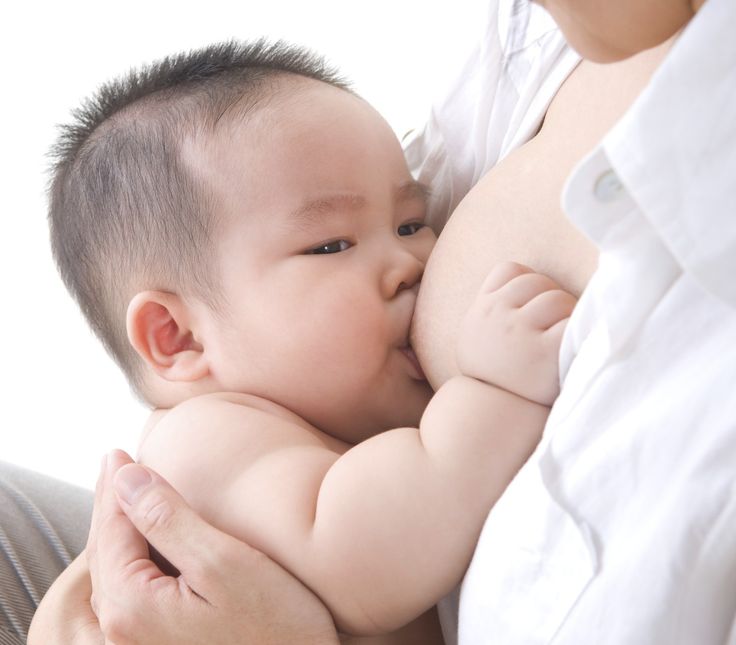 .. yeah... pretty but useless.)
.. yeah... pretty but useless.)
1
My sons 8 months old & he tugs & swats at his ears when he is tired. When brought up to his pediatrician he was then examined for signs of infection but non found. Bringing it up to child's pediatrician to make sure it's nothing serious is a good idea. Every child is different so the meaning of the action of course can be different for other children. For my son it's just a habit especially when he is fighting his sleep.
2
Myself and my two brothers, according to my parents, all tugged our ears when we were tired.
I actually still find myself doing it once in a while if I'm exhausted and I've caught my niece and nephews exhibiting the same behavior. IMO, it's a telltale sign that they're doneski : T-minus 30 min until complete meltdown; get the story book out or you'll regret it.
This thread at ask.metafilter. com, agrees with all the answers here, including this one. Basically, if they don't have an ear infection or problems with their Eustachian tubes, then they're just tired.
com, agrees with all the answers here, including this one. Basically, if they don't have an ear infection or problems with their Eustachian tubes, then they're just tired.
Although their link is dead in that post, a user says: I had always heard that there is a specific "calming" nerve in the ear that helps one to relax when stimulated.
Try it yourself. It feels good, and soon you'll want a nap (you remember naps, right? That thing we all want to do after a large meal ;).
Maybe she is playing with the sound of chewing. We adults ignore it; but chewing is quite loud for your own ears if you pay attention. By pulling, the sound changes.
You will know when your child have an ear infection, it will be pretty obvious.
Your Answer
Sign up or log in
Sign up using Google
Sign up using Facebook
Sign up using Email and Password
Post as a guest
Required, but never shown
Post as a guest
Required, but never shown
By clicking “Post Your Answer”, you agree to our terms of service, privacy policy and cookie policy
HOW TO RECOGNIZE OTITIS IN A CHILD AND HOW TO PREVENT IT? — clinic "Dobrobut"
Meanwhile, three-quarters of all children at least once have problems with the ears before the age of three.
Why are ear infections so common in children?
Let's look into the middle ear to understand why small ears are so often affected by pathogens. The canal, which is called the Eustachian (auditory) tube, connects the nasopharynx and the middle ear cavity and performs many important functions: it helps to compare pressure, provides ventilation and protection. But it is in the nasopharynx that most bacteria find a nutrient medium for reproduction. Since the Eustachian tube in a child is short, wide and placed horizontally, the mucous discharge from the throat and nose, as well as any microorganisms in them, is easier to get through it into the middle ear cavity. The immune system of the child is not yet fully formed, and therefore vulnerable - it needs more time to fight many unfamiliar bacteria. This is how otitis often develops in many young children.
Why is it important to properly treat children's ears?
Your child's hearing depends on the correct vibration of the eardrum and the condition of the other parts of the middle ear.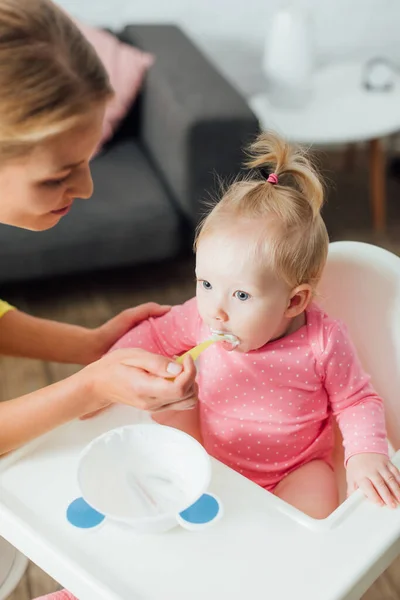 Repeated infections can damage the eardrum, while the accumulation of fluid in the middle ear cavities negatively affects (sort of dampens) the vibration of the eardrum - eventually both interfere with the baby's normal hearing. That's why it's important to take otitis media treatment seriously, especially when your child is learning to speak. Partial hearing loss can lead to a delay in speech development or even pronunciation problems, later affecting the child's speech habits and learning success.
Repeated infections can damage the eardrum, while the accumulation of fluid in the middle ear cavities negatively affects (sort of dampens) the vibration of the eardrum - eventually both interfere with the baby's normal hearing. That's why it's important to take otitis media treatment seriously, especially when your child is learning to speak. Partial hearing loss can lead to a delay in speech development or even pronunciation problems, later affecting the child's speech habits and learning success.
How to detect otitis media in a child?
It is unlikely that your baby will say: “Something unpleasant is happening in my ear and it hurts me. Please take me to the doctor! »But early diagnosis of otitis media and timely treatment have the best results and will prevent complications of otitis media.
Temperature . This is not an obligatory symptom of otitis media. The temperature in the baby rises against the background of a respiratory infection. But when the baby's temperature is above 37.5 ° C, be sure to consult your pediatrician. The following additional symptoms or a direct referral from your doctor will tell you about the need to contact a pediatric otolaryngologist.
But when the baby's temperature is above 37.5 ° C, be sure to consult your pediatrician. The following additional symptoms or a direct referral from your doctor will tell you about the need to contact a pediatric otolaryngologist.
Runny nose . The most common cause of otitis media is a cold that is accompanied by a runny nose. The same mucus secreted from the child's nose can also enter the Eustachian tube. As a rule, a runny nose in babies begins with an intensive production of a clear liquid secretion by the nasal mucosa, but after a few days it becomes yellow-green in color and becomes thicker. It is at this stage that it is important to thoroughly rinse the child's nose and remove mucus (if the child cannot do this on his own, nasal aspirators should be used) to prevent secretions from entering the middle ear cavity.
Bad sleep. If a child wakes up more often at night, cries, is naughty, or in some other way expresses that she is in pain, especially during ARVI, this is also an alarm signal.
Unusual behavior and feeling unwell. Parents can also pay attention to other manifestations of otitis media that make themselves felt by a change in the child's habitual behavior and a deterioration in her well-being in general:
However, as a rule, you can suspect an ear infection with a child crying sharply, caused by severe pain, especially when you touch her ears.
Should I see a doctor if I suspect otitis media?
Usually so. It is very difficult to prescribe the correct treatment in the presence of otitis without a preliminary examination. The doctor must determine the condition of the eardrum, check the nose and throat in order to select the correct appropriate complex therapy. In addition, the doctor will be able to advise you on how to prevent the development of the inflammatory process in the ear in the future and what painkillers can be used when the baby's ear starts to hurt (and this often happens in the middle of the night!).
Mild to moderate ear infections can be completely cured with the use of topical anti-inflammatory agents. In this case, you need to carefully monitor the condition of the baby in order to notice the deterioration of the situation in time, and strictly follow the recommendations of the otolaryngologist. If the situation does not improve within two to three days, or in case of acute otitis media, at the first visit, the doctor may prescribe antibiotic therapy.
It is forbidden to treat a child with antibiotics without a doctor's prescription! Antibiotics are prescribed only when other treatments may not be effective. In this case, the doctor takes into account the age and weight of the child in order to correctly calculate the dosage and duration of the course of treatment.
If a child twitches his ear, is he sick?
A child's habit of touching his ears does not necessarily indicate otitis media. The child may just be interested in exploring her ears, or she likes to pull on them, or her teething irritates the nerve endings and causes the child to constantly pull on her ears.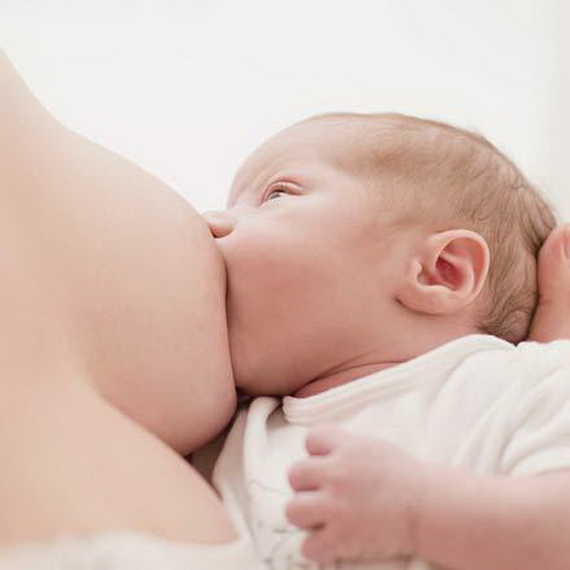 But if the baby's increased interest in his ears is combined with crying, irritability, fever, runny nose, conjunctivitis, a cold in general, you should take this signal seriously. Very often, intuition helps attentive mothers to notice and recognize an ear infection in a child in time - especially when they already know what it is and how it can manifest itself.
But if the baby's increased interest in his ears is combined with crying, irritability, fever, runny nose, conjunctivitis, a cold in general, you should take this signal seriously. Very often, intuition helps attentive mothers to notice and recognize an ear infection in a child in time - especially when they already know what it is and how it can manifest itself.
How to prevent otitis in children?
Breastfeeding during the first year of life. Mother's milk provides the child's natural immunity and contains antibodies that can reduce the risk of developing various infections, including ear infections. If you are bottle feeding your baby, keep him upright (at least 30 degrees) and keep him upright for a few minutes after feeding. Milk can get into the middle ear if the baby is suckling lying down.
No allergens. Irritation of the nasal mucosa due to the influence of allergens leads to excessive production of mucus and swelling of the mucous membranes, which in turn causes blockage of fluid in the middle ear cavities. So get rid of any allergens. Even if your child is not allergic to certain pathogens, the room where she sleeps is not the place for pets, dust and the accumulation of soft toys in the crib. And it is absolutely forbidden to smoke in the presence of a child!
So get rid of any allergens. Even if your child is not allergic to certain pathogens, the room where she sleeps is not the place for pets, dust and the accumulation of soft toys in the crib. And it is absolutely forbidden to smoke in the presence of a child!
Avoid pacifiers. Studies have shown an association between frequency of pacifier use and otitis media. Try to discard the pacifier when the baby falls asleep and sleeps, especially if the baby is already over six months old.
Boost your immunity. Provide your child with a nutritious and balanced diet, plenty of time in the fresh air, and adopt healthy habits to strengthen the immune system.
Get vaccinated against the flu. Studies show that vaccinating a child to prevent influenza reduces the risk of SARS, and with it, otitis media.
Be patient. The good news is that as your baby gets older, their Eustachian tubes will get longer and narrower, making it harder for fluid to get into the middle ear. Meanwhile, the child's immune system becomes stronger, minimizing the risk of infection.
Meanwhile, the child's immune system becomes stronger, minimizing the risk of infection.
Article "When babies have ears hurt"
Yulia Selskaya,
otorhinolaryngologist, head of the otorhinolaryngology clinic, doctor of the highest category, Ph.D.
If the child has a fever, does not sleep, tosses and turns, cries, and when you try to check the ears, the crying intensifies, the baby may have otitis media.
Features of the structure of the ears in children
In terms of the frequency of diseases in children, otitis media (ear inflammation) is in second place after the common cold. At the age of up to a year, 62% of children suffer from otitis media once, 17% - three or more. Most often, children are prone to this disease in the period from three months to three years.
Why do children get sick so often? There are many reasons. It is during this age period that the child has an incompletely formed immune system, it is difficult for the body to resist infections. The anatomical features of the structure of the middle ear contribute to the disease. In newborns and young children, the ear canal is short, the closer to the eardrum, the narrower. The border of the outer and middle ear is the tympanic membrane. The middle ear is located in the temporal part and consists of several elements. The most important is the auditory tube, which connects the nasopharynx and the inner ear. Unlike adults in babies, it is short, wide and more horizontal. This structure contributes to the penetration of infection from the nasopharynx into the middle ear, where instead of a smooth thin mucous membrane and air, there is loose gelatinous connective tissue with a small number of blood vessels. An ideal environment for the development of microorganisms. Acute otitis media develops when inflammation passes from the mucous membrane of the nasal cavity and nasopharynx to the auditory tube. Ventilation and drainage functions are disturbed, and bloody fluid accumulates in the tympanic cavity.
The anatomical features of the structure of the middle ear contribute to the disease. In newborns and young children, the ear canal is short, the closer to the eardrum, the narrower. The border of the outer and middle ear is the tympanic membrane. The middle ear is located in the temporal part and consists of several elements. The most important is the auditory tube, which connects the nasopharynx and the inner ear. Unlike adults in babies, it is short, wide and more horizontal. This structure contributes to the penetration of infection from the nasopharynx into the middle ear, where instead of a smooth thin mucous membrane and air, there is loose gelatinous connective tissue with a small number of blood vessels. An ideal environment for the development of microorganisms. Acute otitis media develops when inflammation passes from the mucous membrane of the nasal cavity and nasopharynx to the auditory tube. Ventilation and drainage functions are disturbed, and bloody fluid accumulates in the tympanic cavity.
The reason for the violation of the patency of the auditory tube can be adenoids, which clog its mouth, congenital anomalies, allergic reactions.
Pneumococci, streptococci and acute eating disorders also cause otitis media. With improper feeding of the baby, the ingress of mixture or breast milk from the nasopharynx can cause inflammation.
Depending on the location of the lesion, otitis media can be external, medial, or internal. The most common at this age is acute otitis media, which develops against the background of SARS, tonsillitis, scarlet fever, measles. According to disease statistics, acute otitis media occurs in 70% of cases, external - about 20%, internal - up to 10% of the total number of otitis media. In young children, acute otitis media is even more common, up to 90%.
Breast-fed children are twice as likely to develop acute otitis media as artificial children. The causes of impaired patency of the auditory tube may also be associated with mechanical blockage of its mouth by adenoids, may be associated with congenital anomalies, allergic reactions.
Diagnosis of otitis in a child
The disease begins suddenly, the temperature rises to 39-40C. The baby is restless, cries a lot, sleeps poorly, sucks sluggishly at the breast. During feeding, it breaks away from the breast with a cry and cries. From the age of four months, the child closes the sore ear with a pen or rubs it against the pillow. If the inflammatory process has affected the eardrum, mucus, pus, and ichor are released from the ear. In a severe form of otitis media in infants, vomiting and diarrhea are possible. The kid throws back his head, strains his arms and legs, his neck does not bend.
Moms ask: how to quickly see a doctor with symptoms of otitis media? Do you need a specialist or will a pediatrician prescribe treatment? You need to see a doctor immediately or within a few hours after the first symptoms appear: emergency care should be provided without an appointment. Only an ENT doctor should diagnose the disease, he will also prescribe treatment.
But there are situations when it is necessary to act without delay. Swelling behind the ear, the child lies with his head thrown back, legs bent to the tummy and convulsions, this may indicate dangerous complications - meningitis or meningoencephalitis. "Ambulance" in such cases is called immediately. Complications are treated in a pediatric ENT hospital, if necessary, an incision in the tympanic membrane is made - myringotomy or tympanostomy (simultaneously with the incision of the tympanic membrane, the tympanic cavity is sanitized and ventilation tubes-aerators are installed). The surgeon performs the operation using a microscope under general or local anesthesia. The purpose of the procedure is to ensure the free outflow of pus from the middle ear cavity. After the operation, the child's condition improves.
Under the supervision of an ENT doctor
An ENT doctor prescribes treatment - antibiotic therapy, painkillers, local procedures and physiotherapy. Recovery usually occurs within 5-10 days. After the baby has recovered, rehabilitation therapy is carried out.
In the treatment of acute otitis in children under two years of age, the doctor will definitely prescribe antibiotics. These can be tablets, syrups, intramuscular injections, in severe cases - intravenous administration of drugs.
Antibiotics are prescribed for children older than two years in a serious condition, when the ear hurts a lot and the temperature is above 38C.
Many parents are skeptical about the use of antibiotics for otitis, fearing that the baby's immune system is being harmed. There is no reason to worry: modern drugs are well excreted from the body and the negative consequences of their use are minimal. If otitis media is not treated or done without medical supervision, cicatricial processes in the tympanic cavity, hearing loss, chronic purulent otitis media, which require complex surgical treatment, may occur. In extremely severe cases - mastoiditis, meningitis.
First aid for otitis media
Mom can give first aid to the baby. If the temperature is elevated, it is worth giving the child antipyretic and analgesic drugs based on paracetamol. Analgin and aspirin can not be used! For sanitation of the nose, spray and drops with sea water are used. Otitis is often accompanied by rhinitis. You can gently remove mucus from the front of the nose. Vasoconstrictor drops are not prescribed for infants.
If the baby is over a year old, with severe swelling of the nasal mucosa, medicines are prescribed for the common cold.
Compresses, warming and fatty ointments should not be used for otitis media, otherwise the inflammation will increase. For children prone to frequent otitis, parents put cotton wool in their ears, trying to protect them from the disease. This cannot be done - ideal conditions are created in the external auditory canal for the reproduction of microorganisms, including fungi.
When bathing a child, cotton wool with vaseline oil is placed on children who have a perforation of the eardrum, otherwise the water that enters the eardrum can cause inflammation.

